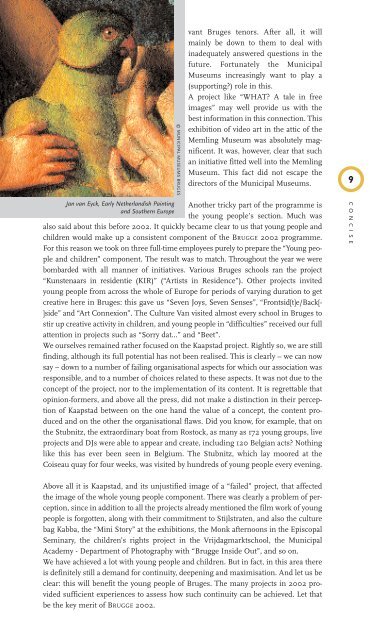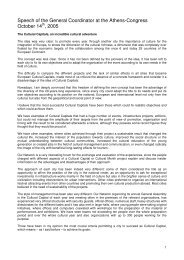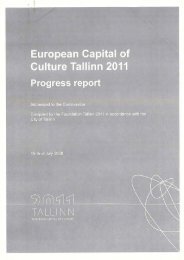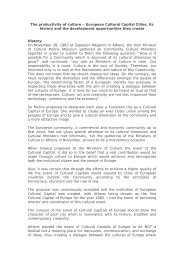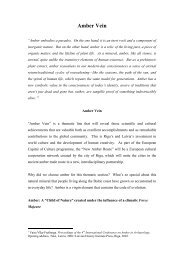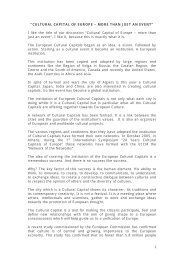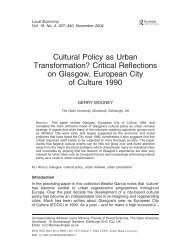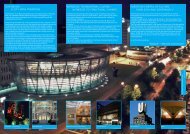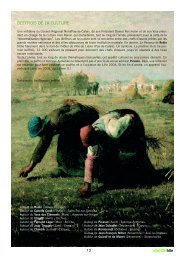Concise.pdf - Brugge Plus
Concise.pdf - Brugge Plus
Concise.pdf - Brugge Plus
- No tags were found...
Create successful ePaper yourself
Turn your PDF publications into a flip-book with our unique Google optimized e-Paper software.
Jan van Eyck, Early Netherlandish Painting<br />
and Southern Europe<br />
© MUNICIPAL MUSEUMS BRUGES<br />
vant Bruges tenors. After all, it will<br />
mainly be down to them to deal with<br />
inadequately answered questions in the<br />
future. Fortunately the Municipal<br />
Museums increasingly want to play a<br />
(supporting) role in this.<br />
A project like “WHAT A tale in free<br />
images” may well provide us with the<br />
best information in this connection. This<br />
exhibition of video art in the attic of the<br />
Memling Museum was absolutely magnificent.<br />
It was, however, clear that such<br />
an initiative fitted well into the Memling<br />
Museum. This fact did not escape the<br />
directors of the Municipal Museums.<br />
Another tricky part of the programme is<br />
the young people’s section. Much was<br />
also said about this before 2002. It quickly became clear to us that young people and<br />
children would make up a consistent component of the BRUGGE 2002 programme.<br />
For this reason we took on three full-time employees purely to prepare the “Young people<br />
and children” component. The result was to match. Throughout the year we were<br />
bombarded with all manner of initiatives. Various Bruges schools ran the project<br />
“Kunstenaars in residentie (KIR)” (“Artists in Residence”). Other projects invited<br />
young people from across the whole of Europe for periods of varying duration to get<br />
creative here in Bruges: this gave us “Seven Joys, Seven Senses”, “Frontsid[t]e/Back[-<br />
]side” and “Art Connexion”. The Culture Van visited almost every school in Bruges to<br />
stir up creative activity in children, and young people in “difficulties” received our full<br />
attention in projects such as “Sorry dat...” and “Beet”.<br />
We ourselves remained rather focused on the Kaapstad project. Rightly so, we are still<br />
finding, although its full potential has not been realised. This is clearly – we can now<br />
say – down to a number of failing organisational aspects for which our association was<br />
responsible, and to a number of choices related to these aspects. It was not due to the<br />
concept of the project, nor to the implementation of its content. It is regrettable that<br />
opinion-formers, and above all the press, did not make a distinction in their perception<br />
of Kaapstad between on the one hand the value of a concept, the content produced<br />
and on the other the organisational flaws. Did you know, for example, that on<br />
the Stubnitz, the extraordinary boat from Rostock, as many as 172 young groups, live<br />
projects and DJs were able to appear and create, including 120 Belgian acts Nothing<br />
like this has ever been seen in Belgium. The Stubnitz, which lay moored at the<br />
Coiseau quay for four weeks, was visited by hundreds of young people every evening.<br />
9<br />
CONCISE<br />
Above all it is Kaapstad, and its unjustified image of a “failed” project, that affected<br />
the image of the whole young people component. There was clearly a problem of perception,<br />
since in addition to all the projects already mentioned the film work of young<br />
people is forgotten, along with their commitment to Stijlstraten, and also the culture<br />
bag Kabba, the “Mini Story” at the exhibitions, the Monk afternoons in the Episcopal<br />
Seminary, the children’s rights project in the Vrijdagmarktschool, the Municipal<br />
Academy - Department of Photography with “<strong>Brugge</strong> Inside Out”, and so on.<br />
We have achieved a lot with young people and children. But in fact, in this area there<br />
is definitely still a demand for continuity, deepening and maximisation. And let us be<br />
clear: this will benefit the young people of Bruges. The many projects in 2002 provided<br />
sufficient experiences to assess how such continuity can be achieved. Let that<br />
be the key merit of BRUGGE 2002.


